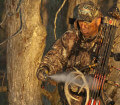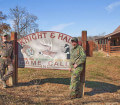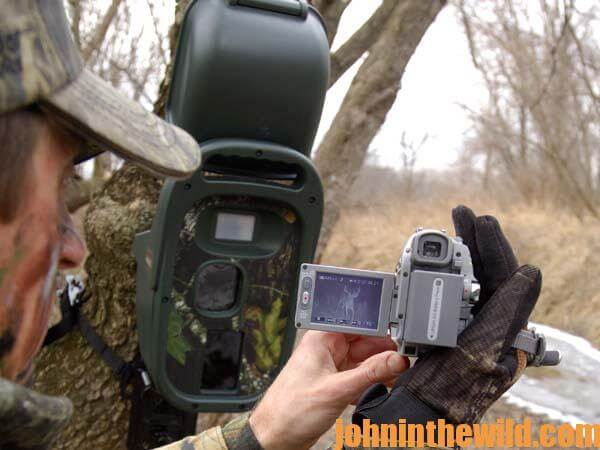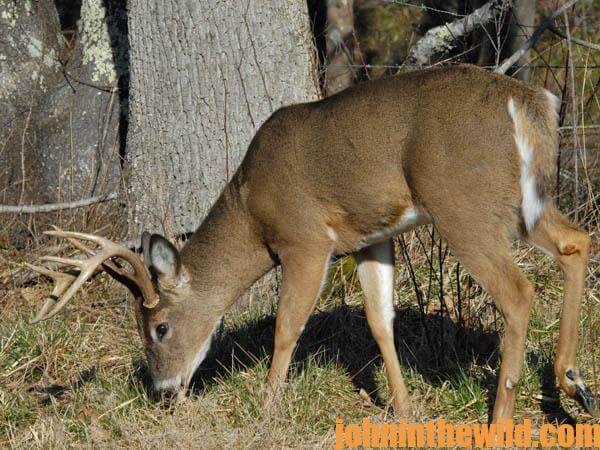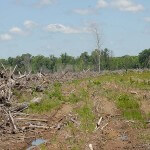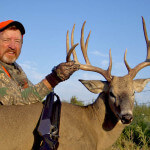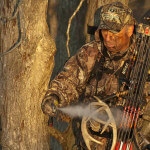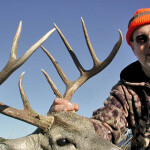John’s Note: David Hale, co-founder of Knight and Hale Game Calls in Cadiz, Kentucky, also co-produces the “Ultimate Hunting” TV show. Each year he travels the country doing TV shows and videos for Commonwealth Productions. When Hale and his partner Harold Knight go hunting, they have to produce animals for TV and video, and they use motion-sensor cameras to accomplish this task. As Hale explains, “We’ve been using motion-sensor cameras ever since they first came to the market.”
Motion-sensor cameras not only have helped Hale to hunt and scout bucks, they’ve also helped him identify the number of predators on the property.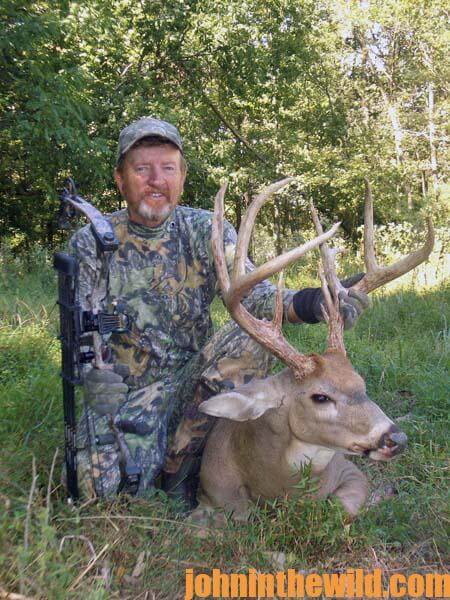
He has seen, “Coons, coyotes and all kinds of other critters that compete with the deer for food and may prey on the deer and the turkeys.” The cameras also can determine the buck-doe ratio, which lets Hale know the effectiveness of scents and calls. Hale has found that you’ll have more success using game calls and scents for luring in bucks with a ratio of 1 buck for every 1-1/2- to 2-1/2-does than in areas containing one buck for every three to eight does.
Too, by using motion-sensor cameras, Hale has learned how much effect moon phase has on deer movement, because the camera time-dates the pictures it’s taking. You also can determine how cloud cover affects deer movement and learn what time of day or night the deer most often will move. Hale reports that, “As long as the deer are undisturbed (don’t experience heavy hunting pressure or any hunting pressure) the time that the deer show-up at a certain place usually will change by 30 minutes each day. I believe this may have some correlation to moon phase, but I can’t say for sure. Remember, many elements work together to cause a deer to do 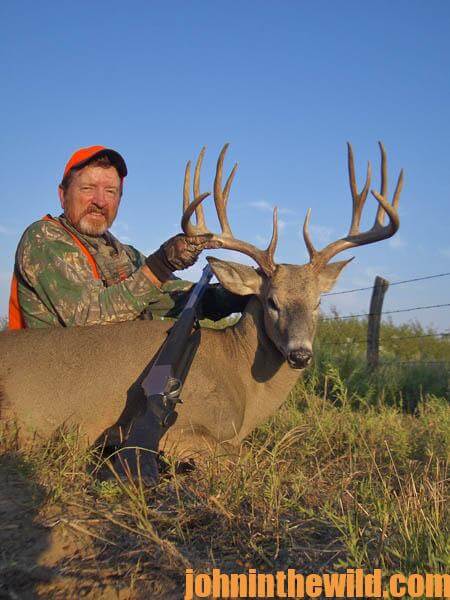 what he does. If a predator hasn’t scared that buck, if the buck hasn’t smelled human odor in the area, if he’s not chasing a doe, if he hasn’t had some other trauma in his life that day, he usually will show-up just a little later.” However, from Hale’s observations and the use of the cameras, the deer will move most with the moon overhead and underfoot. Hale doesn’t try to keep-up with the movement patterns and the feeding patterns of every buck on the property. He says, “Once I know what bucks are on the property, I pick out the bucks that I want to hunt.” And, then Hale uses digital cameras to identify the locations of the bucks, what they’re doing and when. Hale believes that, “I’m far-more successful when I can take any one of 10 bucks that I’ve picked to harvest, than when I hunt one individual buck.”
what he does. If a predator hasn’t scared that buck, if the buck hasn’t smelled human odor in the area, if he’s not chasing a doe, if he hasn’t had some other trauma in his life that day, he usually will show-up just a little later.” However, from Hale’s observations and the use of the cameras, the deer will move most with the moon overhead and underfoot. Hale doesn’t try to keep-up with the movement patterns and the feeding patterns of every buck on the property. He says, “Once I know what bucks are on the property, I pick out the bucks that I want to hunt.” And, then Hale uses digital cameras to identify the locations of the bucks, what they’re doing and when. Hale believes that, “I’m far-more successful when I can take any one of 10 bucks that I’ve picked to harvest, than when I hunt one individual buck.”
Hale also recommends that you pay attention to the point of a canyon or a big ditch since deer will walk around that low place, rather than having to go down and up to move to the other side.
Hale explains that, “If you can find a ditch that is maybe 10- or 12-feet deep and 5- to 10-feet across that ends about 20-yards from the edge of a field, this spot too is a productive pinch point where you can see numbers of deer. This way you’re hunting a field edge and the head of a draw. If you look for bottlenecks, that’s where you’ll see the most deer anytime you hunt.” Although a motion-sensor camera can provide information for the hunter to help ensure his success, a camera also lets you know the number and the size of bucks you have on any piece of property that you hunt. With that information, you can begin to make decisions as to what bucks you want to try and hunt and what bucks you want to try and let walk.
To learn more about hunting deer, get John E. Phillips’ new eBooks “How to Hunt Deer like a Pro,” “PhD Whitetails,” and “Deer and Fixings.” Click here to get these books.
About the Author
John Phillips, winner of the 2012 Homer Circle Fishing Award for outstanding fishing writer by the American Sportfishing Association (AMA) and the Professional Outdoor Media Association (POMA), the 2008 Crossbow Communicator of the year and the 2007 Legendary Communicator chosen for induction into the National Fresh Water Hall of Fame, is a freelance writer (over 6,000 magazine articles for about 100 magazines and several thousand newspaper columns published), magazine editor, photographer for print media as well as industry catalogues (over 25,000 photos published), lecturer, outdoor consultant, marketing consultant, book author and daily internet content provider with an overview of the outdoors. Click here for more information and a list of all the books available from John E. Phillips.

